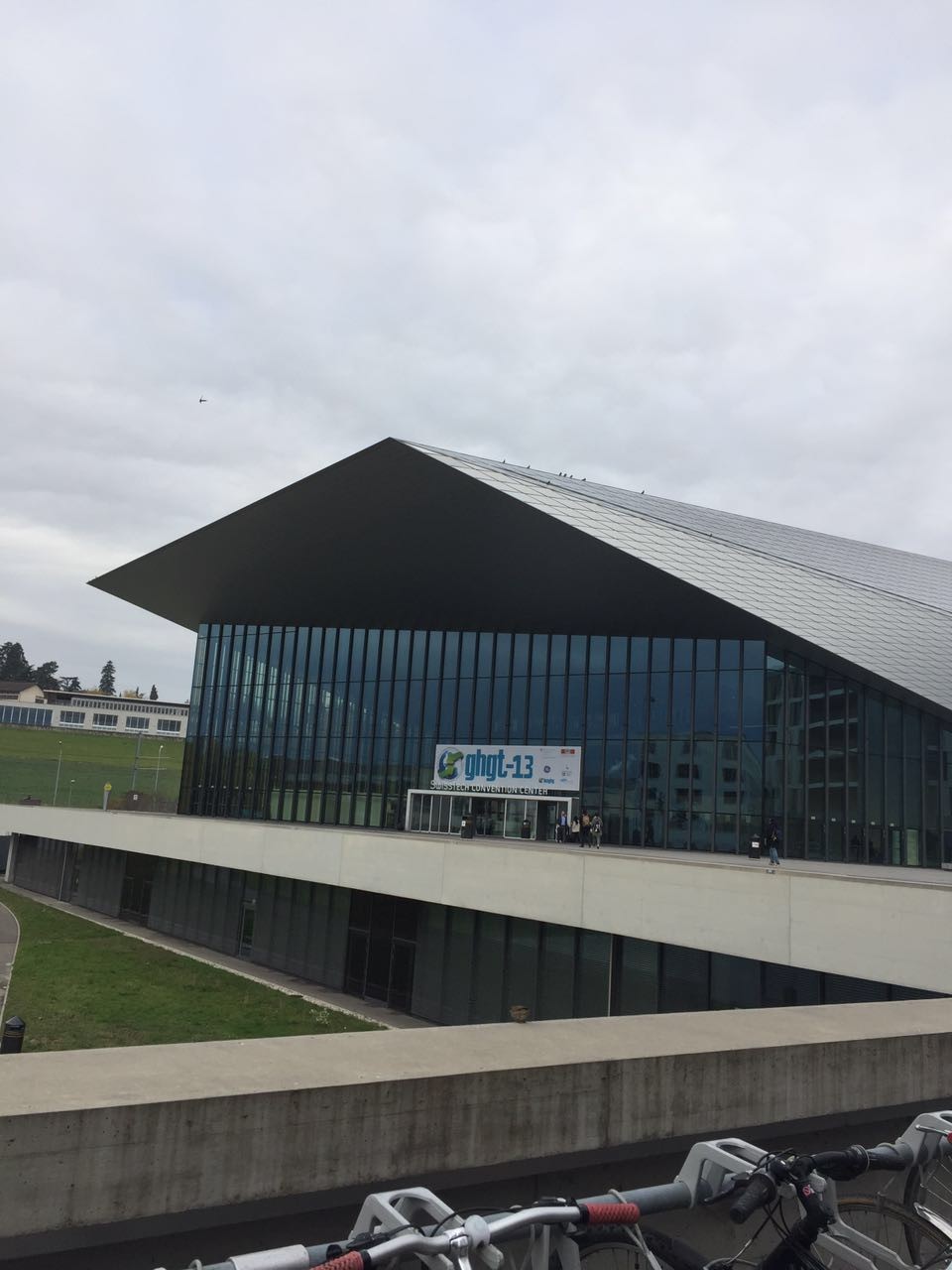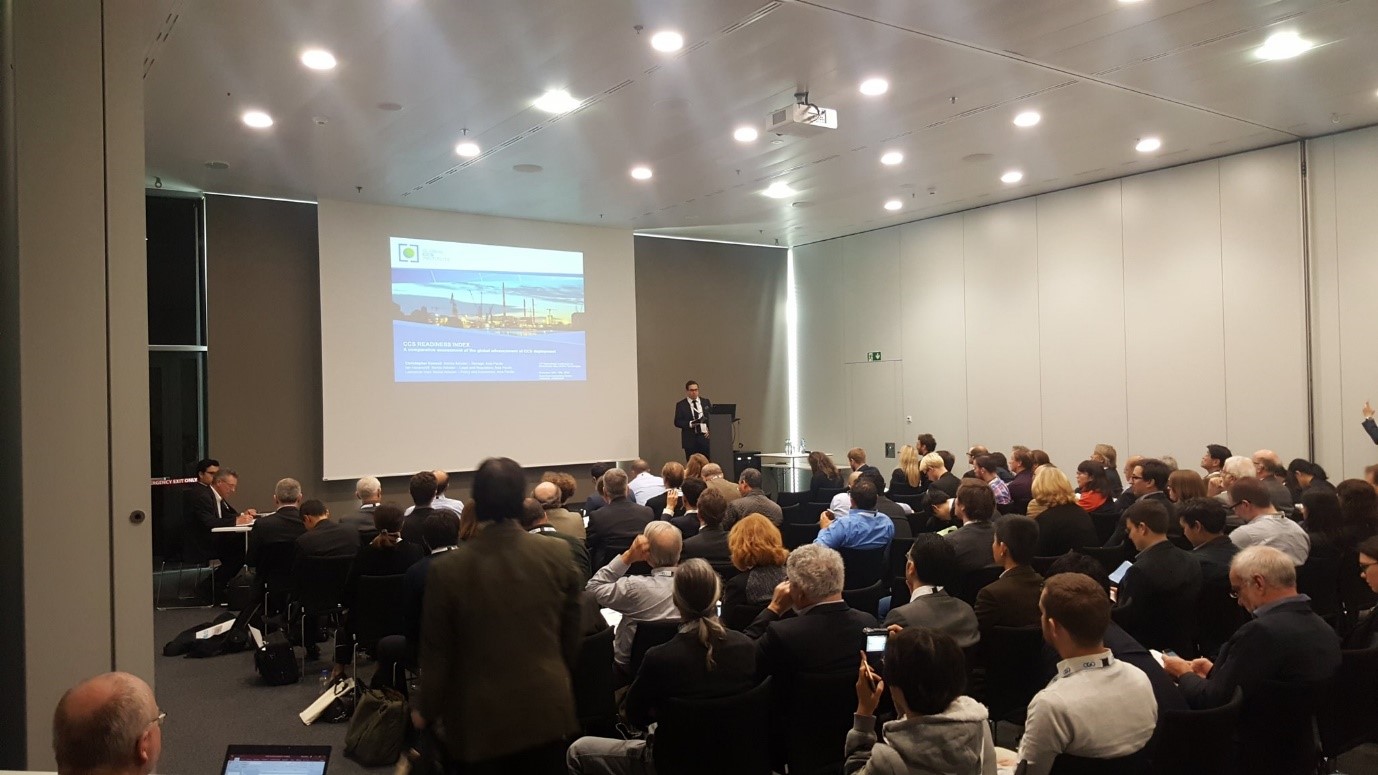Insights and Commentaries
GHGT-13, a reflection
16th December 2016
Topic(s): Carbon capture, use and storage (CCUS)
The IEAGHG's Greenhouse Gas Control Technologies Conference (GHGT) is the major technical CCS conference held every two years, and this year the 13th GHGT conference (GHGT-13) was held from 14 to 18 November 2016 in Lausanne, Switzerland. The conference is dominated by researchers and technical experts and is really a good indication on the status of CCS globally. Institute’s Guido Magneschi, Senior Adviser for Carbon Capture – Europe, Zoe Kapetaki, Technical and Knowledge Sharing Adviser – Europe, Tony Zhang, Senior Adviser for Carbon Capture – APAC, and Chris Consoli, Senior Adviser for Carbon Storage – APAC, attended the conference. Guido presented the Poster on water use on power plants, Zoe presented the overview of CCS demonstration project business models, Tony presented a poster on Sinopec Zhongyuan oil field company refinery CO2-EOR project, while Chris was busy presenting the Global CCS Readiness Index, joining a panel on follower and fore-runner countries, presenting a poster on global storage capacity, as well as chairing a session on carbon storage. In this Insight, Chris reflects on GHGT-13 and discusses the themes emerging from the conference.

GHGT-13 Venue, Lausanne, Switzerland. Photo Courtesy of Tony Zhang.
Carbon capture and storage (CCS) is a vital technology to tackle climate change. The message has been made clear in the Institute’s newest report “The Global Status of CCS: 2016” and the views were shared at GHGT-13 Conference. Apart from this message, there were three key themes that have emerged from the conference.
Theme 1: R&D – ready to help.
The conference made it clear that research and development (R&D) into each element of the CCS technical chain should support deployment. Hundreds of papers and posters were presented at the conference and the majority of those technical papers moved away from general, theoretical CCS research to clear, targeted issues to support specific projects or specific technologies. For example, the technical session on ‘Monitoring of Leakage in the Near Surface’, typically reserved for breakthrough, but yet proven, technologies, shifted to presentations on actual examples and their tested limitations or advances. The greater thoughts of those presenters in that specific session was about how to support a project using least cost methods in accordance with regulatory requirements. This is a reflection of all technical session more broadly, R&D in CCS is now focused and here to help.
Theme 2: CCS is proven, what’s next?
The policy, financing and regulatory sessions were always heavily attended. Given this is a technical conference, the large numbers in those sessions shows how researchers and technical experts are now shifting from the technical question of: Can we do it? to the broader question of: How can we do it? The latter question reflects on the greatest current challenge to the wide scale deployment of CCS ─ providing an enabling environment for CCS through policy, regulatory frameworks and finance. Many differing models, scenarios and case studies were shown, argued and agreed upon (or not), and there is probably no one correct answer. But the full room of people, often numbering 70 to 80, shows there is a general view that these non-technical components are now the most important drivers for CCS deployment.

Dr Chris Consoli presents “CCS Readiness Index” to a full house. Photo courtesy of Roy Anderson, CO2CRC.
Theme 3: The technical issues are evolving.
It was widely recognised by all those who attended that the major issues around CCS are evolving, and this is mainly because of the ongoing successful deployment of CCS. That is, as learnings, techniques and technologies from pilot to large-scale projects are disseminated and outcomes from technical programmes become widely known, the CCS community is becoming more focused. As an example, there were very few basin-scale resource assessments presented which typically dominate. Instead, most technical sessions focused on injection and containment, namely the movement of CO2 and its effect on the reservoir or caprock. Moreover, greater focus at GHGT-13 was on the results of actual capture and storage projects, which clearly reflects the progress made after decades of research on pilot to large-scale facilities. The shift in thinking is now towards the optimisation of CCS technologies, not proving the technology.
Overall there was a cautious, but upbeat mood at the conference – the CCS community, much like the wider community, realise that there is a tremendous challenge ahead. The opening plenary of Gassnova’s CEO summed it up perfectly with the title: “CCS: the time is now”.